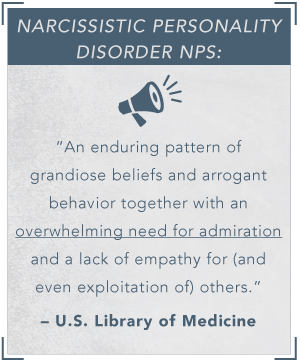Pros And Cons For Veneers

When considering cosmetic dental procedures, veneers are a popular choice for achieving a flawless smile. These thin, custom-made shells are designed to cover the front of teeth, masking imperfections and enhancing the overall appearance of the mouth. However, like any medical procedure, veneers have their advantages and disadvantages. In this comprehensive guide, we will delve into the pros and cons of veneers, exploring the benefits and drawbacks to help you make an informed decision.
Advantages of Veneers
- Aesthetic Appeal: Veneers offer a highly effective way to improve the appearance of teeth, making them look naturally beautiful and well-aligned. They can correct issues such as discoloration, chips, and gaps between teeth.
- Durability: With proper care, veneers can last for many years, typically ranging from 10 to 20 years or more. They are resistant to staining and can withstand the normal wear and tear of daily life.
- Minimal Tooth Preparation: Unlike crowns, which require more significant tooth reduction, veneers usually involve minimal preparation of the tooth surface. This conservative approach helps preserve more of the natural tooth structure.
- Versatility: Veneers can address a variety of dental issues, from slight misalignments and discolorations to more severe problems like worn-down or chipped teeth.
- Boosts Confidence: By improving the appearance of your smile, veneers can significantly enhance your self-confidence and overall quality of life.
Disadvantages of Veneers
- Cost: One of the most significant drawbacks of veneers is their cost. They are considered a cosmetic procedure and, as such, are not usually covered by dental insurance. The expense can be substantial, especially if multiple teeth are being treated.
- Irreversibility: The process of preparing teeth for veneers is irreversible. Because some enamel is removed, the procedure cannot be undone, and the teeth will always require some form of covering.
- Sensitivity: After the veneers are placed, some people may experience sensitivity, especially to hot and cold temperatures. This sensitivity is usually temporary but can be uncomfortable.
- Chipping or Cracking: Although veneers are durable, they can chip or crack, just like natural teeth. If this happens, the veneer may need to be replaced, which can add to the overall cost.
- Not a Solution for All Dental Issues: Veneers are best suited for correcting cosmetic issues. They are not a substitute for proper dental care and cannot fix underlying problems such as gum disease or tooth decay.
Comparative Analysis: Veneers vs. Other Cosmetic Dental Options
When deciding on veneers, it’s essential to consider other cosmetic dental procedures that might achieve similar or better results for your specific needs.
- Crowns: Offer more comprehensive coverage and are used for both cosmetic and functional purposes. However, they require more tooth preparation.
- Bonding: A less expensive, less invasive procedure that uses a tooth-colored resin to repair chips or close gaps. It’s not as durable as veneers and may not last as long.
- Invisalign: An orthodontic treatment that can correct misalignments without the need for veneers. It’s a more extensive process that requires regular adjustments over several months or years.
Historical Evolution of Veneers
The concept of veneers has evolved significantly since their inception. Initially, they were made from porcelain and were quite thick, requiring substantial tooth preparation. Over the years, advancements in dental technology have led to the development of thinner, more durable materials, reducing the need for extensive tooth reduction. Today, veneers are more accessible and offer a natural-looking solution for achieving the perfect smile.
Future Trends in Cosmetic Dentistry
As technology continues to advance, we can expect to see even more innovative solutions in the field of cosmetic dentistry. Trends such as digital smile design, which allows for the simulation of outcomes before any treatment begins, and the use of more translucent materials that mimic the appearance of natural teeth, are on the horizon. These developments will further enhance the aesthetic and functional benefits of veneers and other cosmetic procedures.
Case Study: Real-Life Experience with Veneers
A 35-year-old woman, who had always been self-conscious about the gaps between her front teeth, decided to undergo veneer treatment. After consultation with her dentist, it was determined that veneers would be the most suitable option for correcting the issue. The procedure involved preparing the teeth, taking impressions, and then fitting the custom-made veneers. The result was transformative, not only correcting the gaps but also enhancing the overall appearance of her smile. She reported a significant boost in her confidence, feeling more comfortable in both personal and professional settings.
Conclusion
Veneers offer a highly effective solution for those seeking to enhance the aesthetic appeal of their smile. While they present several advantages, including durability, versatility, and the potential to significantly improve one’s self-confidence, they also come with drawbacks such as cost, irreversibility, and potential sensitivity. By understanding the pros and cons of veneers and considering them in the context of other cosmetic dental options, individuals can make informed decisions about their dental care. As technology continues to evolve, the possibilities for achieving a flawless, natural-looking smile will only continue to expand.
FAQ Section
What are the primary materials used for veneers?
+Veneers can be made from porcelain or composite resin. Porcelain veneers are more durable and resistant to stains, while composite veneers are less expensive and can be applied in a single visit.
How long does the veneer placement procedure take?
+The process typically involves two appointments. The first appointment is for tooth preparation and impressions, which can take about an hour. The second appointment, where the veneers are placed, can also take around an hour, depending on the number of veneers being applied.
Can veneers be used to address tooth decay or gum disease?
+No, veneers are primarily a cosmetic solution. They cannot fix underlying problems such as tooth decay or gum disease. These issues must be addressed through other dental treatments before veneers can be applied.
Are veneers suitable for everyone?
+Veneers can be an excellent option for many people, but they are not suitable for everyone. Individuals with severe tooth decay, active gum disease, or insufficient tooth enamel may not be good candidates for veneers. A consultation with a dentist is necessary to determine if veneers are the right choice.
How do I care for my veneers to ensure they last as long as possible?
+Caring for veneers involves practicing good oral hygiene, including brushing and flossing daily, and attending regular dental check-ups. It's also recommended to avoid biting or chewing on hard objects, as this can cause chipping or cracking of the veneers.
By understanding the pros and cons, and being aware of the latest advancements and considerations in cosmetic dentistry, you can make an informed decision about whether veneers are the right choice for achieving your perfect smile.



